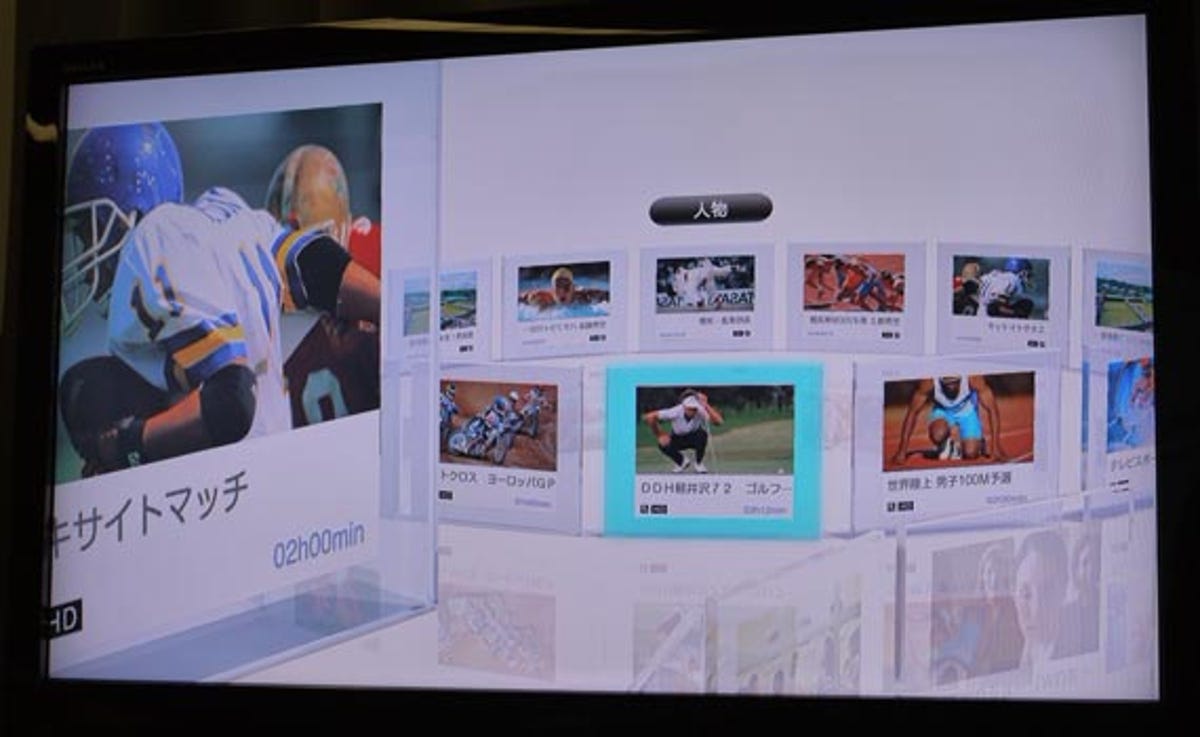
Here at Crave, we often wonder what the future of TVs is — mainly because if there isn’t one, some of us are going to have to find new jobs. Ever helpful, Toshiba thinks it can tell us what the generation after the next generation will look like –- it’s called Cell TV.
The idea behind Cell TV is Toshiba using its significant stake in the Cell processor group — which it co-owns with IBM and Sony — to improve the processing power of televisions. Because Cell is essentially a supercomputer on a single chip, it can do a whole heap of video processing at once. Such power means that one Cell processor could feed multiple TVs across your house, making your TV little more than a ‘dumb’ screen, fed from a central ‘brain’.
The demo we saw — which, we might add, we took with a coronary-inducing spadeful of salt — showed a beautiful user interface (pictured) through which one could find recorded TV shows, or browse live TV channels with a wonderful flowing ‘strip’ design. Although the on-screen text was Japanese, we got the idea. The whole thing was visually stunning, but without sitting down and using it, it’s impossible to say if the UI would actually be practical for day-to-day use.
Cell TV has an unusual form-factor too. Instead of having a TV with everything built in, you’ll probably have something like a monitor, with no built-in tuner or even picture-processing circuitry. The standalone box will take care of all the tricky processing and video recording. Indeed, its credentials in this regard are impressive. Toshiba claims Cell can handle eight HD video streams at once. You would get the choice of where they go too, so you can record four and watch four, or watch one and record seven.
This sort of media receiver might be a brilliant idea, but it comes utterly unstuck in the UK. The problem is, we don’t have open TV platforms, because there’s a total lack of competition on both cable TV and satellite. Add to that Ofcom’s preference for kowtowing to Rupert Murdoch and allowing Sky to carry on with its proprietary set-top boxes, rather than putting the consumer first. Sky’s refusal to consider producing a conditional access module means no third-party solution will ever be able to record Sky in either SD or HD.
freesat and Freeview HD could offer some hope, but neither of those services has much HD content yet — again, Sky has a financial grip on Channel 4 that’s preventing its HD service from being available on freesat.
Problems aside, Cell TV should start arriving next year. It’s entirely possible the TV part will be LED backlit and the Cell part will be housed inside a funky little case of some sort. We won’t know the full details for some time.




